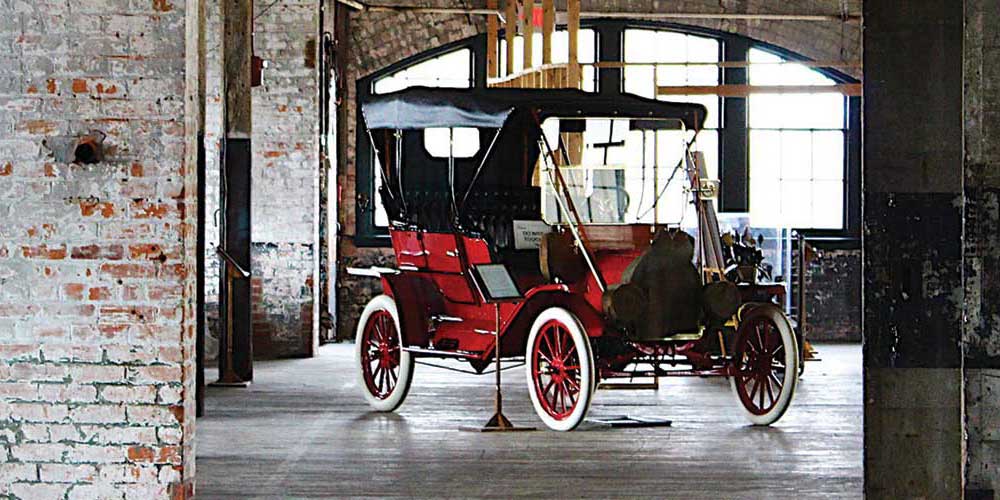by Bob Sadler, MotorCities Director of Communications & Engagement
Images Courtesy of the Walter Reuther Library
Published 8.28.2024
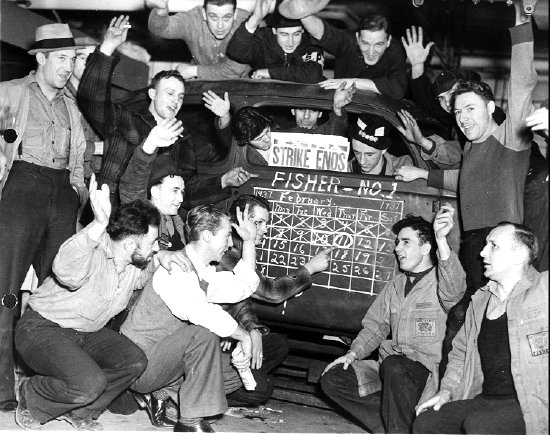 The Flint Sitdown Strike ends on February 11, 1937 (Reuther Library)
The Flint Sitdown Strike ends on February 11, 1937 (Reuther Library)
EDITOR’S NOTE: In honor of the upcoming Labor Day holiday, we remember the beginnings of the UAW in Detroit.
On August 26, 1935, 89 years ago this week, the United Automobile Workers of America (UAW) was founded in Detroit.
The Great Depression had dealt a significant blow to workers across the country, but especially to those in the automotive industry. In 1932, unemployment in Detroit was around 50 percent, and Ford had reduced its workforce from almost 100,000 in February 1929 to 37,000 in 1931. In addition, as factory production grew, auto workers faced increasingly dangerous, even fatal working conditions.
In March of 1932, thousands of Ford workers marched on the Rouge Plant with the intent to present Henry Ford with a list of demands, including higher pay and improved working conditions. A succession of skirmishes with Dearborn Police and Ford Security led to gunfire resulting in dozens of injuries and five deaths.
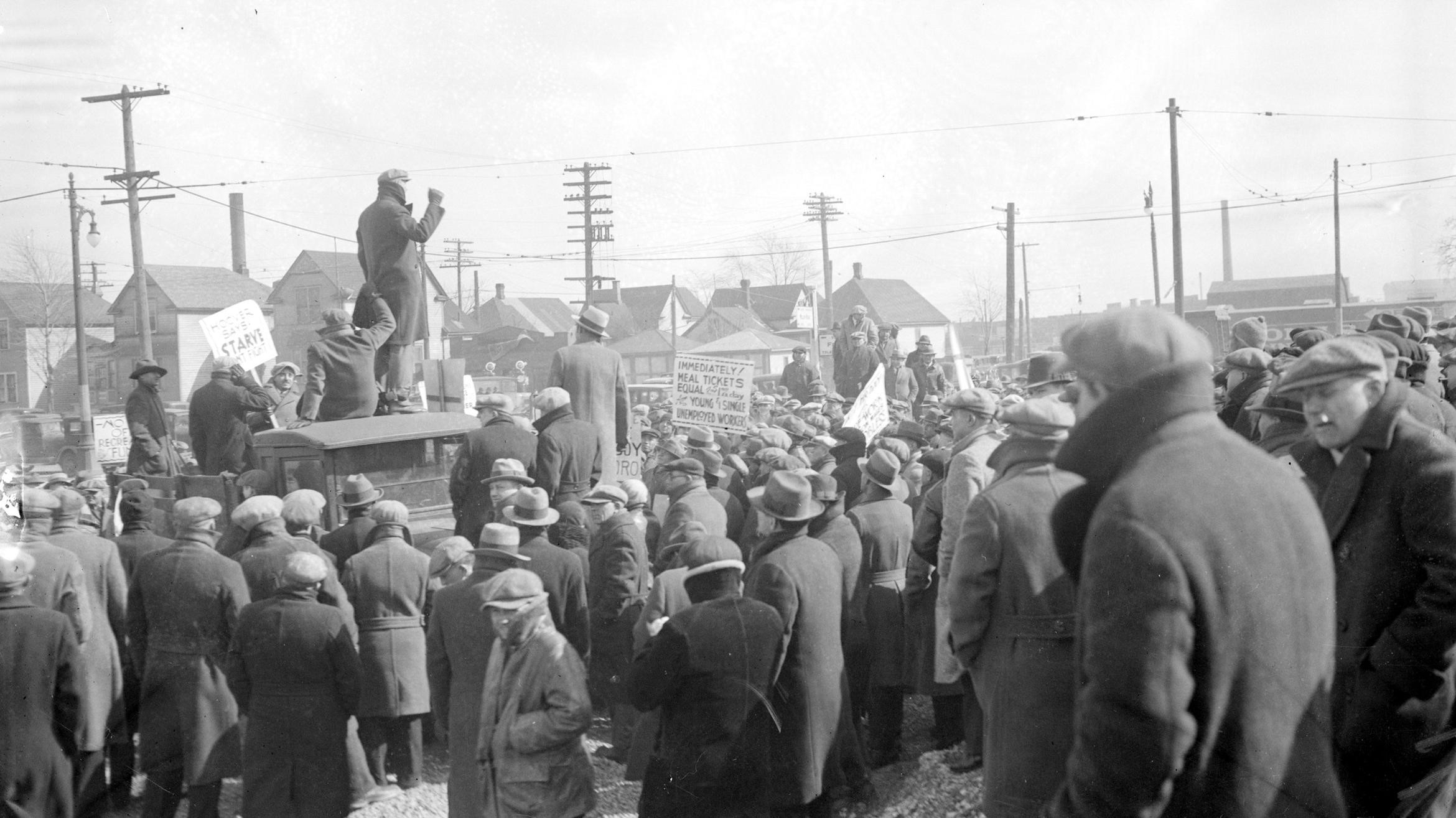 The Ford Hunger March in March 1932, (Reuther Library)
The Ford Hunger March in March 1932, (Reuther Library)
In 1933, a strike at large auto supplier Briggs Manufacturing in Detroit led to another setback for the workers and a victory for management. However, action at the federal level was coming within two years to level the playing field.
On July 5, 1935, President Franklin Roosevelt signed the Wagner Act, also known as the National Labor Relations Act, into law. The legislation established the National Labor Relations Board (NLRB) and gave workers the right to strike, participate in collective bargaining, and form or join unions. It also created a process for determining who would represent employees and empowered the NLRB to enforce management compliance.
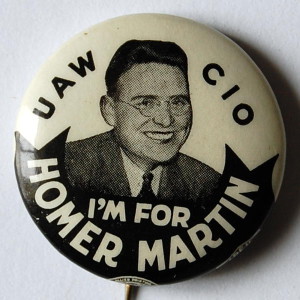 A Homer Martin UAW button
A Homer Martin UAW button
With the passage of the Wagner Act, automakers could not stop their workers from unionizing, and the American Federation of Labor’s (AFL) Committee of Industrial Organizations (CIO) established the UAW later that year. Francis Dillon and Homer Martin were the UAW’s first two presidents.
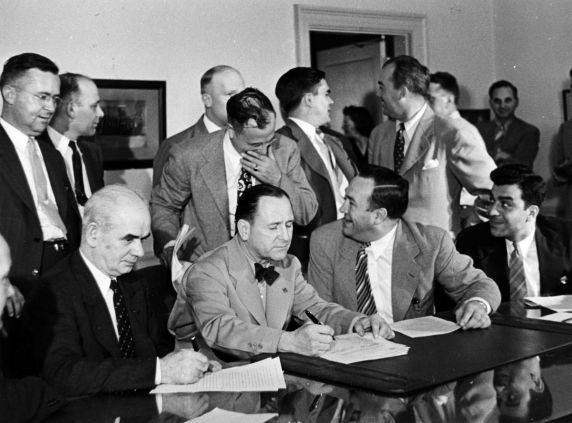 Ford Motor Company signs a contract with the UAW in June 1941.
Ford Motor Company signs a contract with the UAW in June 1941.
While some companies resisted unionization more than others, automakers began gradually accepting the UAW as representative for their employees after a series of sit-down strikes and some violent conflicts. General Motors recognized the UAW at the conclusion of a 44-day sit-down strike in Flint in 1937. Ford Motor Company was the last of the major automakers to recognize the UAW in 1941.
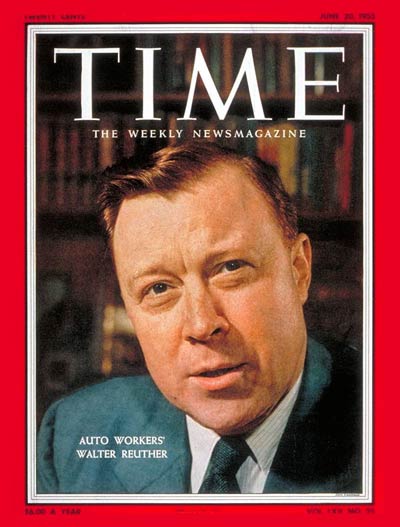 Walter Reuther on the cover of Time Magazine
Walter Reuther on the cover of Time Magazine
Over the following decades, the UAW International Union continued to negotiate working and living conditions for its members, particularly under the leadership of Walter Reuther. One of the original founders of the union, Reuther became president in 1946 and served in the position until his death in a plane crash in 1970. Over his tenure, he helped establish unemployment benefits, wage adjustments, health plans and vacations, and many of these agreements set a base for industrial unions across the nation.
Bibliography
Alpern, Ron. “The Rise of the United Auto Workers Union” and “Ford Hunger March.” Southwest Detroit Auto Heritage Guide, MotorCities.org.


